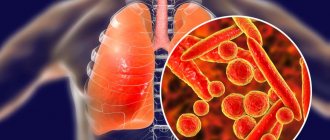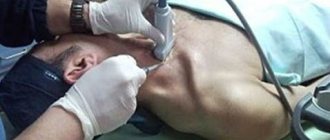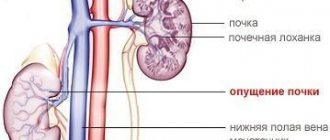1.General information
Acute respiratory failure (ARF) is a rapidly occurring and increasing multi-organ oxygen deprivation.
The lack of oxygen supplied to organs and tissues is independently called hypoxia. Such a deficiency can be relatively small and last for years (chronic hypoxia), causing a number of gradually worsening health problems. But if hypoxia increases rapidly and exceeds a certain critical level, this threatens disaster for all body systems. In this case, the brain receives intense, “screaming” emergency signals through literally all neural channels, however, with acute respiratory failure (and, as a consequence, hypoxia), the activity of the central nervous system itself is inhibited and disorganized; as a result, the short time while a person remains conscious passes or flies by against the backdrop of panicky horror of imminent inevitable death. Alas, this psycho-emotional afterburner, practically uncontrolled by the will, has every reason: death from suffocation is one of the most painful and occurs, depending on the degree of oxygen deficiency, in a few minutes or tens of minutes. Close to the concept of “hypoxia” is the narrower and more specific term “asphyxia,” which means the inability or inability to breathe, which results in the same hypoxia.
Acute respiratory failure is characterized by high mortality: according to various estimates, up to 40 percent or more of all registered cases. Regardless of the causes, ARF syndrome is an emergency condition and requires immediate medical intervention: the later assistance is provided, the higher the likelihood of irreversible changes, including fatal ones.
Sign up for a consultation
A must read! Help with hospitalization and treatment!
What to do if you have ARF
First aid for respiratory failure should be provided after calling an ambulance. There is no talk of waiting for a local therapist in case of ARF.
The algorithm of actions is as follows:
- Call an ambulance.
- You can seat the person near the table so that he can put his hands on the table and raise his shoulders higher - closer to his chin. This will allow the auxiliary respiratory muscles to have more range of motion.
- Try to calm the victim.
- Free him from his outerwear, unfasten all the buttons and the belt of his trousers so that nothing interferes with his breathing.
- Provide fresh air flow from windows and vents.
- Constantly reassure the patient and be with him.
- If a person has asthma, help him take 1-2 breaths from his inhaler.
- If such symptoms occur after eating fish or canned food, give him “Activated carbon” or other sorbents.
If ARF develops as a result of a foreign body entering the throat, an urgent need to perform the Heimlich maneuver: stand behind the victim, clasp him with both hands. Clench one hand into a fist and place the palm of your other hand under it. Now, with a pushing movement directed upward, bending our elbows, we press on the abdominal area “under the stomach” until the victim’s airways are completely cleared.
If the development of ARF was preceded by a cold or a barking cough, it is recommended to inhale with a 0.05% naphthysine solution through a nebulizer before the ambulance arrives: 3-4 drops per 5 ml of saline solution.
When signs of ARF are present in a person who has been in a car accident, then it is possible to remove him from the car or shift him only after fixing his cervical spine with a Shants-type collar.
2. Reasons
Let's return to the definition given at the beginning of the article. Oxygen is delivered to all structures, tissues and cells of the body in a chemically bound form, as a compound with iron-containing hemoglobin, a high-molecular protein of red blood cells (erythrocytes).
The immediate cause of acute hypoxia as systemic oxygen starvation is either blood deficiency as such, or a drop in blood pressure and a slowdown in hemodynamics, or a lack of bound oxygen in the blood - hypoxemia. In any case, the reduction or cessation of tissue oxygenation, i.e. tissue respiration (which can happen even if external respiration is preserved, if we understand by this the motility of the respiratory muscles and the gas exchange function of the lungs) is one way or another connected with blood oxygen.
There are primary and secondary ODN.
Primary develops due to failures, blockages or difficulties in external breathing. The most common direct cause is mechanical obstruction or obstruction of the airways of various sizes (larynx, trachea, bronchi, small terminal bronchioles) due to spasm, accumulation of mucus or pus, foreign body entry, filling with water, compression from the outside, rapid edema (inflammatory, allergic, toxic , autoimmune). Acute respiratory failure can result from lung damage due to severe thoracic trauma, as well as functional failure of pulmonary gas exchange tissues and structures.
External respiration can also be suppressed during painful and electric shocks, severe head injuries, neuromuscular disorders, overdoses of drugs, muscle relaxants, analeptics (stimulants of the cerebral respiratory center and vascular tone).
Secondary acute respiratory failure develops for reasons that do not affect the external respiratory system. Such reasons include blood deficiency conditions, hemodynamic disorders and hypoxemia of extrapulmonary etiology (hypovolemic shock, heart attack, thromboembolism in the pulmonary artery, various types of anemia, vascular collapse, high-altitude sickness, hypercapnia, etc.).
Visit our Pulmonology page
How to determine the severity of respiratory failure
To definitively diagnose the disease and its stage, it is enough to determine the level of blood gases.
Early diagnosis of DN includes examination of external respiration, identification of obstructive and restrictive disorders.
An examination for suspected DN necessarily includes spirometry and peak flowmetry, and arterial blood is taken for analysis.
The algorithm for determining respiratory failure consists of the following diagnostic criteria:
- oxygen tension (Pa) - lower than 45-50;
- carbon dioxide tension is higher than 50-60 (indicators in mmHg).
There is a low likelihood that a patient will undergo a blood gas test without good reason. Most often, diagnosis is carried out only when the pathology has manifested itself in the form of obvious
signs.
3. Symptoms and diagnosis
Following specially developed criteria, three stages of acute respiratory failure are distinguished - from the first, relatively compensated, to the third, which is actually the beginning of agony, the so-called. proceeds to hypoxic coma, convulsions, loss of pupillary reflexes and rapid death.
The most typical symptoms of acute respiratory failure are a feeling of suffocation, reflex tachycardia and tachypnea (respectively, increased heart rate and respiration). Of the mental disorders in the early stages, even euphoria is possible, but then confusion sets in, psychomotor agitation with hallucinatory-delusional inclusions that barely have time to form. Harbingers of the third stage and imminent cardiac arrest are a sharp slowdown in respiratory rate (respiratory rate) to deep bradypnea, arrhythmia at a very high heart rate, and a drop in blood pressure.
In diagnostic terms, the main problem is that there may simply be no time left for diagnosis. Here, often everything depends on the qualifications, experience and, last but not least, the intuition of the doctor and/or members of the resuscitation team: every mistake can be fatal, and every insight (insight) can be life-saving, even if the health worker at that moment does not have time to indulge in logical reasoning . If acute respiratory failure develops, say, in the operating room or intensive care ward, then there are immeasurably more opportunities to assess the situation and respond according to the protocol than when diagnosing ARF in the field, where only the most primitive tools are available (stethophonendoscope, tonometer, portable electrocardiograph) . In the initial stages of acute respiratory failure, an interview is performed (if the patient is conscious and can speak), examination, and auscultation; in a medical facility - emergency laboratory tests, spirometry, EEG, X-rays, ultrasound and other studies, as they say, according to the situation, according to indications and whenever possible.
About our clinic Chistye Prudy metro station Medintercom page!
How are the severity of pathology in children determined?
DN in a child usually occurs in an acute form. The main differences between pathology in adults and children are different levels of blood gas parameters.
| Severity | Indicators (in mmHg) | Symptoms |
| I | — Ra oxygen drops to 60-80 |
|
| II |
|
|
| III |
|
|
| IV (hypoxic coma) |
|
|
If signs of DN 3 and 4 severity are detected, the child requires emergency hospitalization and intensive care. Treatment of children with mild DN (stages 1 and 2) is possible at home.
4.Treatment
The main directions are the restoration of airway patency, respiratory movements, cardiac activity, vascular tone, blood volume and composition. As a rule, the patient is intubated and connected to a ventilator (artificial lung ventilation), or an oxygen mask, nasal catheter, etc. is used. Bronchodilators, antispasmodics, analgesics or anesthetics, respiratory stimulants, blood substitutes and other compounds according to indications are administered symptomatically.
Measures are taken for drainage, removal of foreign bodies and accumulated substances, detoxification, desensitization, etc.
The prognosis is always serious - too much depends on the reasons that caused ARF, on accompanying circumstances and complications, on individual factors, but most importantly, on the timeliness and adequacy of the provision of pre-medical and medical care.
Sign up for a consultation
How to recognize respiratory failure
Common clinical symptoms of DN include:
- rapid breathing, periodically changing to slow breathing;
- no breathing sounds are heard;
- pulse is unstable;
- retracted area between the ribs;
- the breathing process is difficult, it requires the use of additional muscles;
- the upper and lower limbs, the tip of the nose and the nasolabial triangle acquire a bluish tint;
- the patient has a pre-fainting state, loss of consciousness is possible;
- there is an increase in cardiac output (the volume of blood that is ejected by heart contractions per minute);
- the appearance of respiratory distress syndrome.
If at least a few symptoms of DN appear, the patient should undergo an examination, find out the reasons for the development of the pathology, and adhere to the doctor’s recommendations.
Disease prevention
In order to prevent pathology, all risk factors that can provoke it should be eliminated. If any negative symptoms appear, it is important to consult a doctor in order to promptly diagnose and treat lung or heart disease. Also, experts recommend leading a healthy lifestyle (not smoking or drinking alcohol), engaging in moderate physical activity and eating right. The diet should be balanced with a predominance of fresh vegetables and fruits.
In order to prevent the development of acute cor pulmonale, patients diagnosed with varicose veins and atrial fibrillation are prescribed indirect anticoagulants. If there are blood clots in the veins, a vena cava filter is often installed. It is a small device that is installed into the lumen of the inferior vena cava. With its help, detached blood clots do not enter parts of the heart muscle and the pulmonary artery system.
Consequences
Complications concern the heart, central nervous system, lungs and bronchi themselves. Without treatment, a person is guaranteed to die. It is the matter of time.
In addition, the following problems are possible:
- Heart failure.
- Ischemic disease.
- Dementia.
- Decreased memory and concentration.
- General cognitive deficit.
- Pulmonary hypertension.
- Stroke.
- Heart attack.
- Left ventricular hypertrophy.
Pulmonary insufficiency is a severe and dangerous pathological process, which is accompanied by respiratory and cardiac disorders. The goal of treatment is to eliminate the primary disease and prevent complications.
Complications
Here are the complications that respiratory failure can lead to:
- From the side of the heart and blood vessels. Respiratory failure increases the load on the cardiovascular system, causing specific diseases such as ischemia, hypotension, heart attack, etc.
- The digestive organs (intestines, stomach) are also at risk due to respiratory failure. This disease can cause stomach ulcers, intestinal bleeding and irregular bowel movements.
- DN most clearly affects the brain and other organs of the central nervous system. The patient becomes irritable, lethargic, and unable to concentrate.
- Quite often, respiratory failure leads to inflammatory processes in the lungs (pneumonia, bronchitis).
As you can see, there are many causes of shortness of breath. Treatment should begin as soon as you notice warning signs in your body. Perhaps the hot weather or your fatigue are to blame. But respiratory failure syndrome is a serious disease that, if not treated sufficiently, can cause death in the patient. Therefore, it is important to diagnose acute and chronic DN in time and begin treatment without delay.










